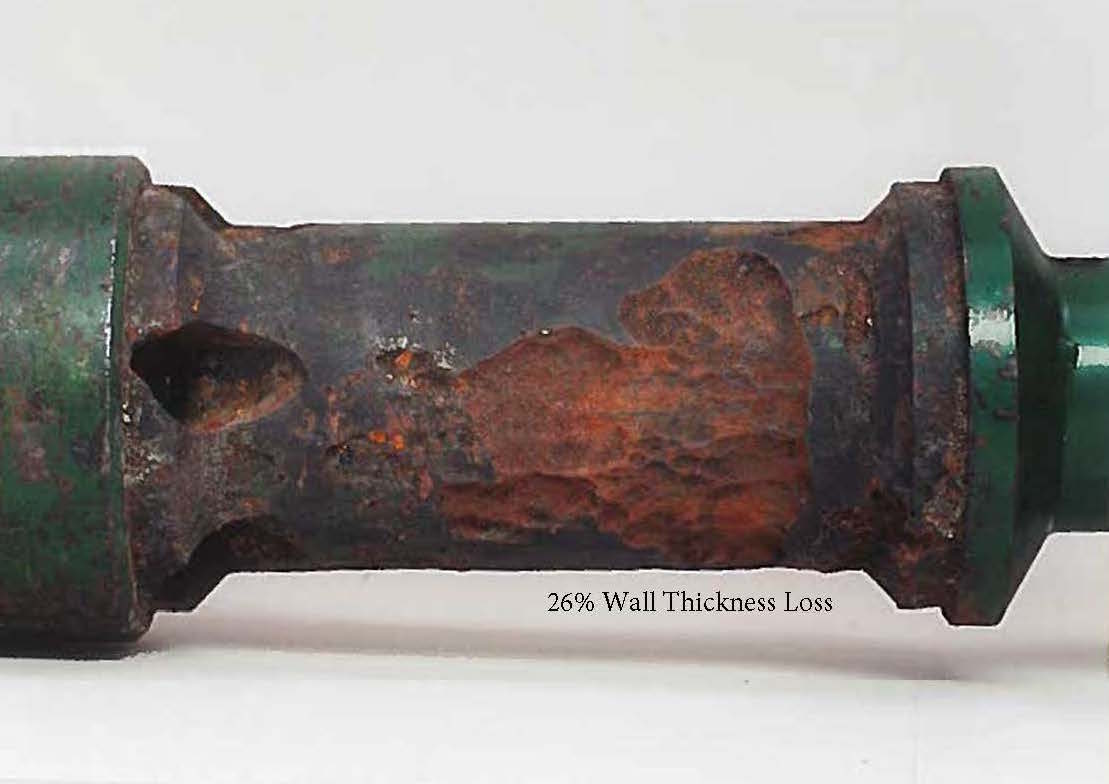Corrosion Diagnostics
Identification of the specific type of corrosion (i.e., stress corrosion cracking, pitting, differential aeration) is the foundation of controlling the problem. Macroscopic examination of the surface and sampling of corrosion residues often provide key information. Micro-sectioning through pits or surface cracks assist in isolating the destructive mechanisms.
Underground "Composite" Pipeline
The gaping hole adjacent to the girth weld in this line pipe segment resulted from corrosion, but the underlying mechanism(s) were not so obvious.
Macroscopic
Longitudinals sections of the pipe body revealed multiple coatings had been applied to the interior wall. Patches of the protective layers had detached from the surface, unveiling a deeply pitted and generally corroded pipe surface.
Microscopic
Metallographic analysis of specimens sliced through the weld zones showed the steels that had been joined together possessed vastly different chemical compositions. Mis-matching steels and weld deposits, and inconsistent coating coverage created a pipeline segment destined to corrode.
Back-Flow Valve
Production site valves survived limited duty - less than 90 days. Inventory incorrectly listed the valve as suitable for severe corrosion environment, but the material was carbon steel.
Salt Water Disposal Well Casing

